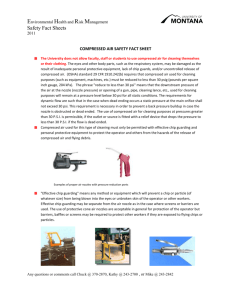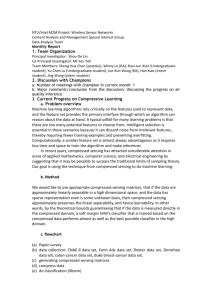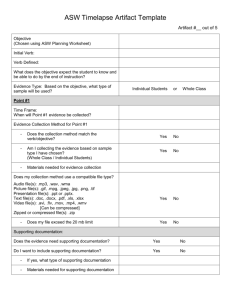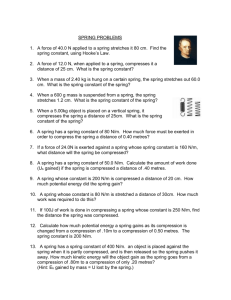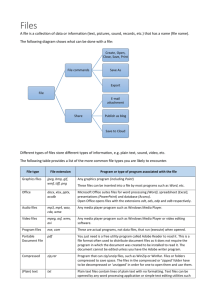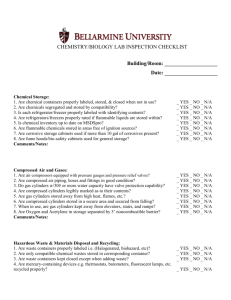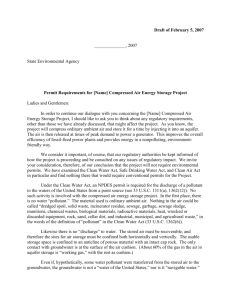Compressed Air Safety
advertisement
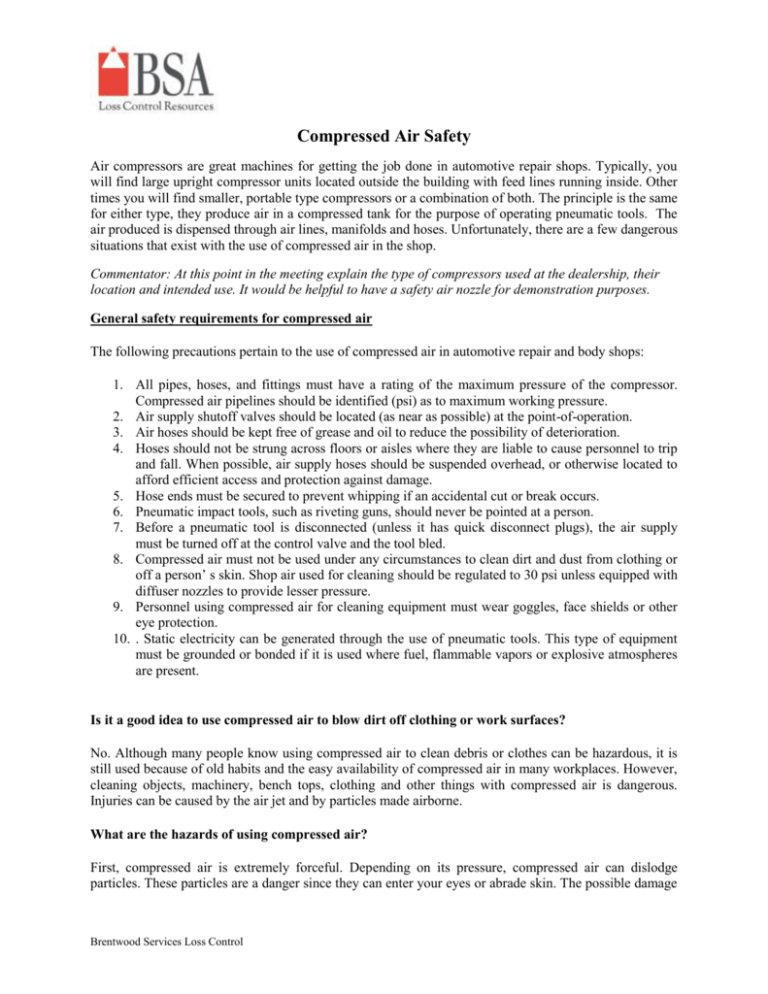
Compressed Air Safety Air compressors are great machines for getting the job done in automotive repair shops. Typically, you will find large upright compressor units located outside the building with feed lines running inside. Other times you will find smaller, portable type compressors or a combination of both. The principle is the same for either type, they produce air in a compressed tank for the purpose of operating pneumatic tools. The air produced is dispensed through air lines, manifolds and hoses. Unfortunately, there are a few dangerous situations that exist with the use of compressed air in the shop. Commentator: At this point in the meeting explain the type of compressors used at the dealership, their location and intended use. It would be helpful to have a safety air nozzle for demonstration purposes. General safety requirements for compressed air The following precautions pertain to the use of compressed air in automotive repair and body shops: 1. All pipes, hoses, and fittings must have a rating of the maximum pressure of the compressor. Compressed air pipelines should be identified (psi) as to maximum working pressure. 2. Air supply shutoff valves should be located (as near as possible) at the point-of-operation. 3. Air hoses should be kept free of grease and oil to reduce the possibility of deterioration. 4. Hoses should not be strung across floors or aisles where they are liable to cause personnel to trip and fall. When possible, air supply hoses should be suspended overhead, or otherwise located to afford efficient access and protection against damage. 5. Hose ends must be secured to prevent whipping if an accidental cut or break occurs. 6. Pneumatic impact tools, such as riveting guns, should never be pointed at a person. 7. Before a pneumatic tool is disconnected (unless it has quick disconnect plugs), the air supply must be turned off at the control valve and the tool bled. 8. Compressed air must not be used under any circumstances to clean dirt and dust from clothing or off a person’ s skin. Shop air used for cleaning should be regulated to 30 psi unless equipped with diffuser nozzles to provide lesser pressure. 9. Personnel using compressed air for cleaning equipment must wear goggles, face shields or other eye protection. 10. . Static electricity can be generated through the use of pneumatic tools. This type of equipment must be grounded or bonded if it is used where fuel, flammable vapors or explosive atmospheres are present. Is it a good idea to use compressed air to blow dirt off clothing or work surfaces? No. Although many people know using compressed air to clean debris or clothes can be hazardous, it is still used because of old habits and the easy availability of compressed air in many workplaces. However, cleaning objects, machinery, bench tops, clothing and other things with compressed air is dangerous. Injuries can be caused by the air jet and by particles made airborne. What are the hazards of using compressed air? First, compressed air is extremely forceful. Depending on its pressure, compressed air can dislodge particles. These particles are a danger since they can enter your eyes or abrade skin. The possible damage Brentwood Services Loss Control would depend on the size, weight, shape, composition, and speed of the particles. There have also been reports of hearing damage caused by the pressure of compressed air and by its sound. Second, compressed air itself is also a serious hazard. On rare occasions, some of the compressed air can enter the blood stream through a break in the skin or through a body opening. An air bubble in the blood stream is known medically as an embolism, a dangerous medical condition in which a blood vessel is blocked, in this case, by an air bubble. An embolism of an artery can cause coma, paralysis or death depending upon its size, duration and location. While air embolisms are usually associated with incorrect diving procedures, they are possible with compressed air due to high pressures. While this seems improbable, the consequences of even a small quantity of air or other gas in the blood can quickly be fatal. Unfortunately, horseplay has been a cause of some serious workplace accidents caused by individuals not aware of the hazards of compressed air, or proper work procedures. What should I use instead of compressed air for cleaning purposes? A brush or a vacuum cleaner should be used instead. If I have to use compressed air for cleaning, how can I do it safely? The minimum air pressure that is still effective should be used. A "quiet" nozzle (i.e. one with low noise emission) should be selected. The nozzle pressure must remain below 30 psi and personal protection equipment (PPE) must be worn to protect the worker's body, especially the eyes, against particles and dust under pressure. Air guns should also be used with some local exhaust ventilation or facilities to control the generation of airborne particulates. When compressed air cleaning is unavoidable, hazards can be reduced by making adjustments to the air gun such as: chip guards that can deflect flying dust or debris, extension tubes that provide the worker a safer working distance, or air guns equipped with injection exhausts and particle collection bags. Meeting Attendees (sign your name) Moderator: _____________________ Brentwood Services Loss Control Date __________
